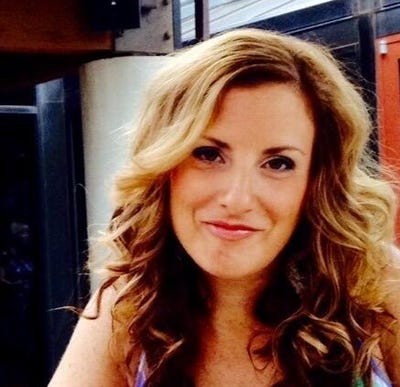Fancy Food Show Gets a Taste of Climate ChangeFancy Food Show Gets a Taste of Climate Change
Plant-based is a hot topic at Specialty Food Association's winter show. Best-selling author Amanda Little addresses the future of food at the Specialty Food Association's winter show.
January 21, 2020

While San Francisco’s Moscone Center was bursting with gourmet goodies from around the world during the Specialty Food Association’s 2020 Winter Fancy Food Show, held Jan. 19-21, it was the future of the world’s food supply that had everyone talking.
Amanda Little, a professor of journalism and science writing at Vanderbilt University in Nashville and the author of the recent best-seller, "The Fate of Food: What We’ll Eat in a Bigger, Hotter, Smarter World," addressed Fancy Food Show attendees at a session on Jan. 20. Her book is based on a five-year adventure into the lands, minds and machines shaping the future of sustainable food.
The world’s food supply is facing a vast spectrum of pressures, she said. From extreme weather events to diet trends emphasizing protein, environmental challenges are such that scientists say by mid-century, agriculture won’t be able to support human civilization.
“Climate change is becoming something we can taste,” said Little, who showed a series of news clips reporting crops around the world—from wine grapes in France to citrus in Florida and olive trees in Italy—wiped out as a result of environmental pressures.
“The main way that most people will experience climate change is through its impact on food,” said Little, quoting Tim Gore, head of policy, advocacy and research for Oxfam International. He has also said “climate change will hit food production harder and sooner than previously thought.”
Consider this, said Little: Seventy percent of the world’s fresh water flows to farms; one-third of the world’s grain goes to feeding livestock; and humans consume 160 million tons of seafood, 50 billion chickens and 5 billion cattle, pigs, goats and sheep each year.
“How are we going to fix the problem? How do we build a 100% sustainable food supply?” she said.
During the five years Little researched her book, she visited 14 countries and 18 states in search of the answer.
She looked at technology and food reinvention at companies such as Sunnyvale, Calif.-based Blue River Technology, which created the first weeding robot. She also visited the indoor vertical farmers at San Francisco’s Plenty and AeroFarms in Newark, N.J. And she also considered the other side of the spectrum by stretching her own backyard farming skills.
After consideration, she landed here: “Why can’t we do both and find the common ground between high-tech solutions and sustainable practices?”
Shifting our diets to mostly plants is another piece of the puzzle, said Little.
The Fancy Food Show floor was teaming with tasty plant-based products. More than 15 new companies were on deck with plant-based foods in a dedicated Plant-Based Food exhibition in the What’s Next in Food pavilion. Those exhibitors were in addition to the scores of companies sampling plant-based food products in the main exhibit halls.
Among them was Califia Farms of Los Angeles, which showcased its new line of oat milks, its most successful launch in company history, said Greg Steltenpohl, co-founder and CEO.
“The food industry has to change,” said Steltenpohl at his booth on the show floor. “We need to dismantle the food pyramid and rebuild it as something more sustainable.
“We’re still an independent company with a singular plant-based mission,” he continued. “We understand what the planet will go through, if we don’t get people to at least try a flexitarian approach.”
About the Author
You May Also Like



.webp?width=300&auto=webp&quality=80&disable=upscale)


